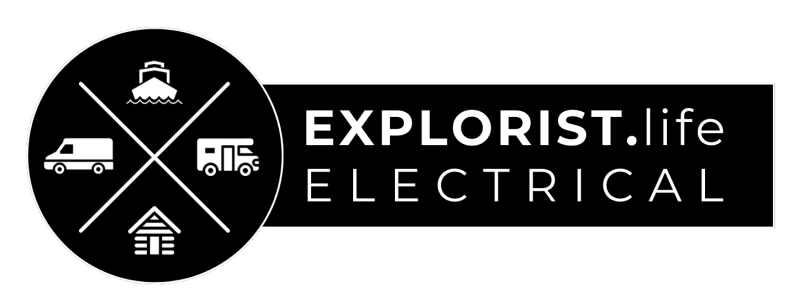Try our solar cost and savings calculator
Breakers and Fuses
Collapse
X
-
Mike. it seems to me that the other side of the battery isolator is connected (at separate points) to the alternator and the engine battery. It contains diodes to allow current to flow only toward each battery. That means that, unless the isolator fails, a short to ground on the wire between fuse bus and isolator cannot possibly draw power from the engine battery. It would require two points of failure (or a mechanic making one short with each hand) to endanger the connecting wire. And the current from the alternator with the engine running is, IMHO, going to be less than 100A, and limited by the alternator protection. -
because power can flow both ways in that cable. if the engine is running - flows from alternator to battery, if engine not on, and lame brain mechanic shorts the terminal at the isolator, the other fuse protects the wire.Leave a comment:
-
Pardon my ignorance, but why use 2 100amps fuses in serie between positive distribution box and battery isolator ?
I'm about to install a battery isolator in my camper and from what I've read I understood (probably wrong...) that I'd need 1 fuse each side of the batery isolator, as close to the power source as possible (so, close to the batteries). Thanks !Leave a comment:
-
The actual fuse and wire sizes will be different, but what you see below is the proper wiring diagram. I am not going to redraw the circuit with your actual sizes, but if you ask I will tell you what sizes to use.

Leave a comment:
-
This is a pretty good blueprint. Plus it's "interactive."
Leave a comment:
-
You need a fuse at the battery, to protect the cable going to the fuse box
Easily and economically satisfies ABYC 7 circuit protection rule by mounting on a 3/8 battery post, battery switch or bus bar.
the dual fuse model can fuse your charger and your main cable to the inverter and fuse box
Blade Fuses are often not the best choice, when run close to limits, they can often blow, or the contacts in the box, heat and loosen. If the box is a high quality, you may be ok.
Remember the fuses protect the wire, so if your wire is rated for 30A, you need less than a 30A fuse to protect it.Leave a comment:
-
Breakers and Fuses
I'm building a modest RV system. 2-80w panels, 40a MPPT charge controller, 100ah battery, 1000w inverter, 55a AC to DC charger. I've got my Pos & Neg bus bars and I've got a blade fuse box for dc appliances/devices.
My question is this: Where do I need to connect other fuses and/or breakers into this system?
Are there essential fuse/breaker locations vs good but non-essential locations?
I would greatly appreciate any help for me to determine what kind of fuse or breaker I would need and where.
Thank you.
Copyright © 2014 SolarReviews All rights reserved.
Powered by vBulletin® Version 6.1.3
Copyright © 2026 MH Sub I, LLC dba vBulletin. All rights reserved.
Copyright © 2026 MH Sub I, LLC dba vBulletin. All rights reserved.
All times are GMT-5. This page was generated at 07:14 PM.


Leave a comment: